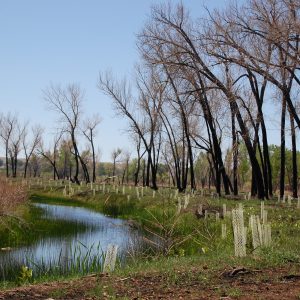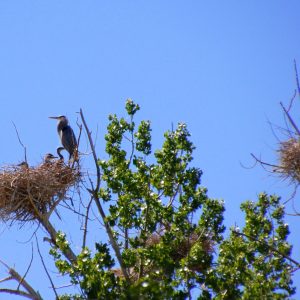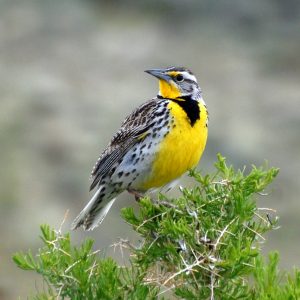Well, there’s no two ways about it — it’s June already. I would stop to wonder at this surprising fact, but there’s too much to do! Seed collection preparations continue, with collecting plant specimens, scouting for sites, and identifying plants once they acquire all the physiological characteristics that allow them to be keyed out, such as seeds or flowers. We’re more than halfway through golden eagle nest monitoring now, with the little chicks being approximately 40 days old. I only have one little guy in my assigned nest, and right now it’s still fluffy and white but showing dark lines and spots on its wings where feathers are growing in to their sheaths. The chick will probably fledge at about 60 days old, give or take a few days.
Another project has been planting native silver buffaloberry shrubs at a habitat improvement project site. I feel bad for the place, having suffered severe takeover from Russian olive and saltcedar (nasty invasive species), then a wildfire, and now an invasion of knapweed. The BLM has worked hard on invasive species control in this area, cutting and spraying the olive and saltcedar every year for several years now. I myself participated in the spraying during the winter of 2011. It’s disheartening to know the knapweed has created another relative monoculture there, but hopefully our little shrubs will be able to get a toehold and outcompete some of the nasties. On planting day, we also investigated a great blue heron rookery (collection of nests in a single tree) nearby, which was very interesting. Four babies were in one nest at the time, being monitored by a watchful adult.
Other ongoing projects continue as well, including investigating unknown raptor nests for activity and species identification, acquiring GPS data about powerlines and fences, and checking stock tanks for wildlife escape ramps.
In summary: life is busy, but as usual, I can’t complain. Day by day I work toward crossing things off my ever-present to-do list, knowing one little intern can only do so much. At day’s end, you just have to realize that you did the best you could, you’ll try again tomorrow, and at least more is done today than was done yesterday.
- Planted native shrubs with protectors to defend them from deer nibbles
- Great blue heron rookery
- Meadowlark gives approaching Silverado the cold shoulder













